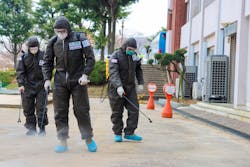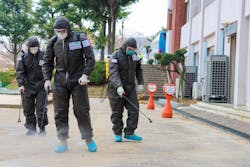An effective vaccine is desperately needed to stem the global spread of the deadly COVID-19 coronavirus, and for their part, the U.S. Army’s researchers are working hard to find a cure that will save countless lives. In addition to developing and testing experimental vaccines designed to prevent the spread of the coronavirus, the Army researchers are also working with private scientists and other government agencies on a total of 24 vaccine candidates. These experimental medicines have been tested on animals, with the next stage involving testing on human subjects.
According to Army Secretary Ryan McCarthy, nine medical treatment facilities with clinical laboratories are certified to conduct testing. “The Army is ready to surge additional medical support if asked,” he noted.
Current testing is being performed at a rate of 810 samples per day although plans are to accelerate testing to more than 16,000 samples per day in hopes of quickly finding a vaccine that is safe for human patients and 100% effective against the COVID-19 coronavirus. The U.S. Army Corps of Engineers is working with at least 18 state governments to provide healthcare planning and development on behalf of the Federal Emergency Management Agency.
By using forced healthcare measures at U.S. military locations hard hit by the COVID-19 coronavirus, including Italy and South Korea, the Army has been able to reduce the number of potential infestations compared to areas without such preventative actions. The forced measures included modifying training activities, delaying moves, quarantining those suspected of being a host for the coronavirus, promoting good hygiene and enforcing social distancing.
Across the Army, steps are being taken to fight the virus, including the use of virtual (rather than physical) training at educational institutions like the Army War College and the U.S. Military Academy at West Point.
About the Author
Jack Browne
Technical Contributor
Jack Browne, Technical Contributor, has worked in technical publishing for over 30 years. He managed the content and production of three technical journals while at the American Institute of Physics, including Medical Physics and the Journal of Vacuum Science & Technology. He has been a Publisher and Editor for Penton Media, started the firm’s Wireless Symposium & Exhibition trade show in 1993, and currently serves as Technical Contributor for that company's Microwaves & RF magazine. Browne, who holds a BS in Mathematics from City College of New York and BA degrees in English and Philosophy from Fordham University, is a member of the IEEE.

